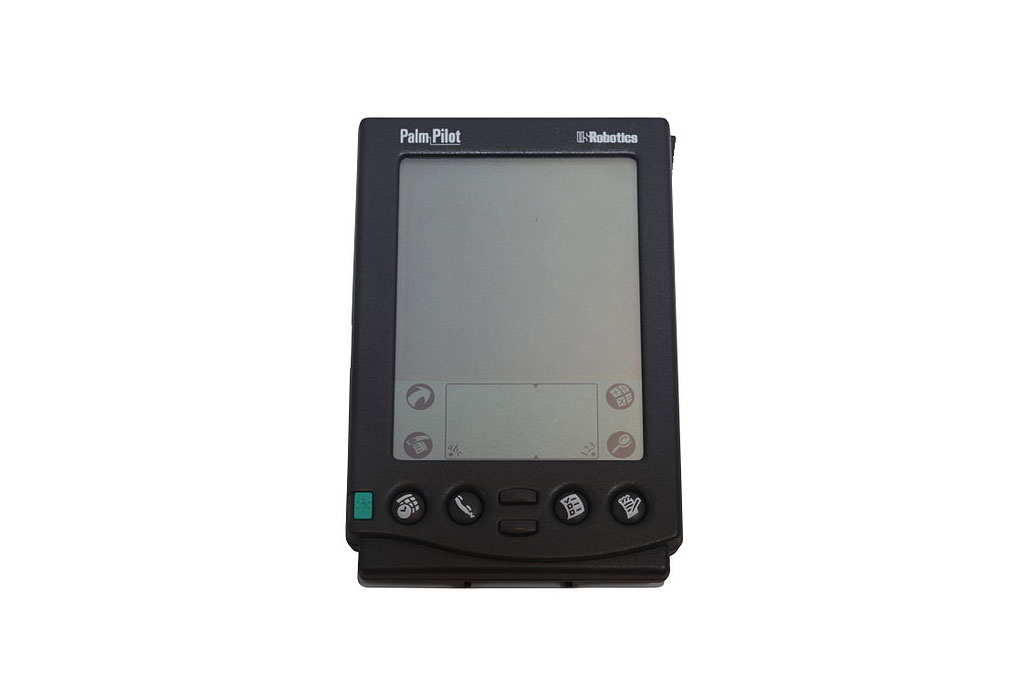Look left or right anywhere in the United States today, and you are bound to see someone with an Android or iPhone in their hands tapping away. Smartphones have become so commonplace that according to the Pew Research Renter 90% of Americans own a smart phone, with 97% owning a mobile phone of some kind. However, not many stop to think that the company that started it all was Palm. Let’s take a closer look at what really happened to Palm Pilot.
The Dawn of Palm Computing
The story of the Palm Pilot begins in the early 1990s, a pivotal era for personal computing. Palm Computing was founded in 1992 by Jeff Hawkins, who was later joined by Donna Dubinsky and Ed Colligan. These Silicon Valley entrepreneurs aimed to create a new category of personal digital assistants that would organize one’s life at the touch of a button.
Hawkins is a neuroscientist who began his studies in electrical engineering at Cornell University in 1979. He graduated, got a job at Intel and later joined GriD Systems in 1982 working on pen-based portal computers for business. He saw huge potential in the idea, and wanted to develop a machine that would respond to human impulses. So back to school it was. Hawkins enrolled in Berkley’s grad program for bio-physics in 1986, and left the program after two years to develop and patent a handwriting recognition algorithm he dubbed PalmPrint. He licensed the software to GriD, was named vice president of research, and shortly after created the first successful pen-based computer with his team. While the device worked, it was just too big and clumsy and Hawkins knew he could take this further. He became fixated on the idea of a portal computer that could fit into the palm of one’s hand. So in 1992, he left GriD and ventured out on his own, taking the licensed software with him into the unknown world of handheld computers. Palm Computing was born.
The early focus of Palm was on creating software for existing PDAs, notably the Zoomer, which did not achieve commercial success. There was also intense competition in the market, namely Apple, which coined the name Personal Digital Assistant (PDA). These early experiences were critical in shaping the vision for Palm’s own products. The team recognized the need for a device that was both affordable and easy to use, with a robust and intuitive user interface.
The Launch of Palm Pilot
In 1996, Palm released the first “Pilot” PDA, the Palm Pilot 1000. What set it apart from its competitors, like Apple’s Newton MessagePad, was its simplicity and focus on core features: address book, calendar, contacts, tasks, and notes. The handheld devices featured a compact design with a monochrome touchscreen supported by a stylus. It used a unique handwriting recognition software called Graffiti, which was quick to learn and efficient to use.
The Palm Pilot was a resounding success, quickly becoming the leading product in the nascent PDA market. Its affordability, ease of use, and reliable synchronization with personal computers struck a chord with both professional and casual users, helping Palm sell millions of units worldwide.
Expansion and Innovation
Following the success of the initial model, Palm expanded its product line with enhanced versions like the Palm Pilot Professional and Palm III series, which offered more power, memory, and connectivity options. During this time, Palm’s operating system, Palm OS, became a standard in the handheld computing market. In order to grow, Palm needed money. They sold the brand to U.S. Robotics, a modem company with a high valuation and market share.
The late 1990s and early 2000s saw Palm at the peak of its innovation. The company introduced the Palm V series, which featured a sleek, metal design and improved display. It was not just a business tool but a lifestyle gadget, marking Palm’s status as a cultural icon of the tech world. But there was something looming in Silicon Valley that analysts and entrepreneurs could not fathom: the dot-com bubble of 1995.
The Bubble Grows
In 1997, 3Com acquired US Robotics and the Palm brand in a strategic move to enhance its position in the growing market of PDAs and mobile computing. At the time, Palm was making significant inroads with its Palm Pilot devices, which were rapidly gaining popularity for their simplicity and efficiency.
The acquisition was part of a larger trend during the late 1990s where larger tech companies sought to bolster their product lines and technological capabilities through mergers and acquisitions. For 3Com, which was primarily known for its network infrastructure products like network cards, modems, and routers, acquiring Palm brought a promising new dimension to its business—handheld computing.
The deal was valued at approximately $44 million. Through this acquisition, 3Com aimed to integrate Palm’s technology with its own enterprise networking solutions, creating new, innovative products that combined connectivity with mobile computing. This acquisition not only provided 3Com with a strong presence in the mobile computing market but also helped Palm gain the financial and business support needed to scale its operations and expand its reach in the global market.
Palm Computing went public on March 2, 2000. The initial public offering (IPO) was amazingly successful, reflecting the strong demand and popularity of mobile computing devices at the time. The IPO priced Palm, Inc.’s shares at $38 each, and on its first day of trading, the stock soared, briefly giving the company a market value exceeding that of its parent company, 3Com, which still held a significant portion of Palm’s shares. This IPO was one of the most notable during the dot-com boom, highlighting the tech industry’s explosive growth during that period.
The iPhone Era Begins
The landscape of mobile computing began to change with the introduction of more advanced mobile phones and smartphones with internet access. Competitors like Nokia, BlackBerry and Microsoft with their mobile solutions started to encroach on Palm’s market share. Palm attempted to respond with devices like the Treo smartphone, which integrated phone capabilities with the traditional PDA functions. While the Treo was well-received, it was not enough to stem the rising tide of competition.
In 2003, Palm spun off its software division into PalmSource (to focus on Palm OS development), and the hardware division was renamed PalmOne. In 2005, PalmOne reacquired the Palm trademark and reverted its name to Palm, Inc. This period was marked by several attempts to revitalize the brand and regain market relevance with new devices and updated versions of Palm OS.
The debut of the first iPhone in January 2007 marked a pivotal moment in the technology industry, fundamentally transforming the smartphone landscape. Introduced by Apple’s co-founder Steve Jobs, the iPhone combined a phone, an iPod, and an internet communicator into a single device with a sleek, touchscreen-based user interface. Its launch set a new standard for what consumers expected from their mobile devices, notably in terms of usability, design, and functionality. Palm could just not compete against Apple. It was hindered by an aging operating system and hardware that could not match the performance and appeal of the iPhone. Apple’s entry into the market shifted consumer expectations towards more integrated and visually engaging user experiences, something Palm’s existing products struggled to provide. Furthermore, the iPhone’s robust ecosystem, driven by the App Store launched in 2008, put additional pressure on Palm, whose devices lacked a comparable range of applications and developer support.
Acquisition and the End of Palm
The efforts to maintain its foothold in the evolving smartphone market were insufficient against the innovation pace set by the iPhone and later, Android devices. Palm tried to maintain a foothold with the Palm Pre and a new mobile operating system dubbed webOS, released in 2009. However, it was too little, too late. The phone was plagued by a lack of innovation, production and distribution delays, and moreover there was no app ecosystem for third-party developers. Also, many users complained that the Pre had a ridiculously sharp edge that dug into ones hand when slid open. One user even posted a YouTube video using the phone to cut cheese. The handwriting was no longer in the palm but on the wall…so to speak.
In 2010, Hewlett-Packard (HP) acquired the Palm brand for $1.2 billion, marking the end of Palm as an independent entity. HP hoped to leverage Palm’s webOS for its range of mobile devices. However, the initiative did not meet expectations, and HP discontinued the line of Palm devices in 2011.
Where is Palm Now?
Today, Palm is no longer an active player in the mobile computing market. The brand lives on mostly in tech nostalgia, remembered for its pioneering role in making digital organizers mainstream. The intellectual property surrounding Palm, including webOS, has been passed around various companies, with LG acquiring it in 2013 for use in its smart TVs and other appliances.
The history of Palm Pilot is a tale of rapid rise, dominance, struggle, and eventual decline in the relentless tech industry. Yes, innovation can change the world, yet companies must continuously evolve to stay relevant. Palm’s legacy, however, endures. The iconic devices laid the foundation for the smartphones we use today and demonstrated the potential of handheld computing. While Palm as a company may no longer be at the forefront of technology, the impact of the brand’s iconic name is indelibly etched into the history of computing.
Photo by Rama & Musée Bolo


